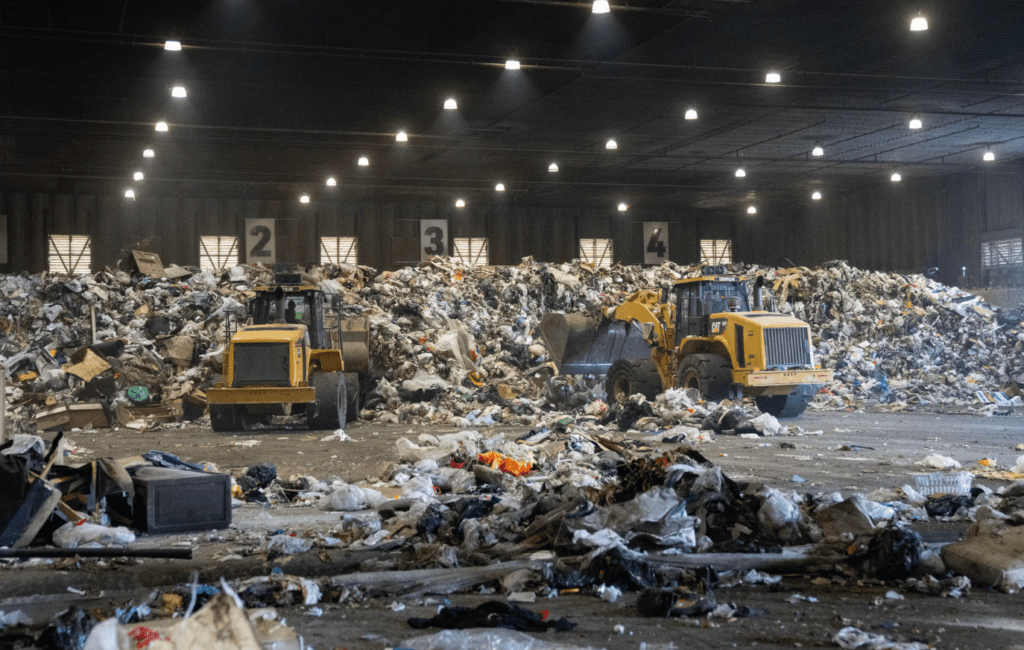TL;DR:
- The Food Scraps Pickup Program in Ramsey and Washington counties employs AI and robotics to streamline composting.
- Specially designed compost bags can be placed in regular garbage carts and are sorted using AI technology.
- Misfires occasionally occur but are rectified through ongoing AI training.
- Collected food scraps are currently sent to a commercial composter with plans for future energy generation through anaerobic digestion.
- This “co-collection” model simplifies waste collection, incurs no extra cost for residents, and reduces greenhouse gas emissions.
- Increased participation is crucial for refining AI technology and expanding the program.
- Residents of select cities can sign up at foodscrapspickup.com, with plans for program expansion in Ramsey and Washington counties.
Main AI News:
The cutting-edge Food Scraps Pickup Program in Ramsey and Washington counties is revolutionizing composting, bringing a high-tech twist to residents’ trash disposal routines. In a groundbreaking departure from traditional curbside compost programs, this initiative combines convenience and environmental sustainability, all while relying on advanced artificial intelligence (AI) technology.
Residents in select cities are now equipped with special compost bags designed to withstand the rigors of regular garbage collection. These bags can be placed in standard garbage carts and are collected by waste haulers. The innovative aspect of the program unfolds at the county’s waste facility, where AI and robotic arms come into play.
At the heart of the operation is an AI system that scans trash on conveyor belts, operating at an impressive speed of 73 feet per minute. This AI system identifies food scrap bags based on color and size, ensuring accurate sorting. These unique food scrap bags are specifically engineered for efficient recognition and separation from other waste items. Once detected, the AI system signals a robotic arm to swiftly and precisely grab the food scrap bag, separating it from the rest of the waste stream.
While the process is mostly accurate, occasional misfires occur. To enhance precision, facility workers continually train the AI system by re-evaluating items flagged as food scrap bags, whether correctly identified or not. Currently, collected food scraps are sent to a commercial composter, with plans to transition to anaerobic digestion for energy generation in the future.
In contrast to the traditional method of separate compost carts, Ramsey and Washington counties employ a “co-collection” model where food scrap bags are collected alongside regular trash. This approach simplifies the waste collection process for both residents and waste haulers, with no additional cost to residents beyond their regular trash fees. The counties cover the expenses associated with the compost bags.
The success of this program hinges on increased participation, which, in turn, refines the AI technology, as more residents embrace the Food Scraps Pickup Program, the technology evolves, making it easier for other local governments to adopt this innovative waste management solution.
Residents of Maplewood, North St. Paul, Cottage Grove, and Newport can sign up for the Food Scraps Pickup Program at foodscrapspickup.com. While the expansion to other cities in Ramsey and Washington counties is in the works, residents can still utilize drop-off sites for food scraps and stay informed through the program’s website.

Piles of trash were collected and sorted on the main tipping floor at the Ramsey. Source: Washington Recycling & Energy Center in Newport.
Conclusion:
The implementation of AI-driven composting in Ramsey and Washington counties not only enhances waste management efficiency but also provides an eco-friendly and cost-effective solution. As participation grows, it sets a precedent for innovative waste management practices in the market, potentially leading to broader adoption by local governments seeking sustainable solutions.

